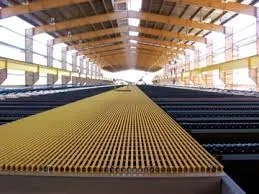
-
 Afrikaans
Afrikaans -
 Albanian
Albanian -
 Amharic
Amharic -
 Arabic
Arabic -
 Armenian
Armenian -
 Azerbaijani
Azerbaijani -
 Basque
Basque -
 Belarusian
Belarusian -
 Bengali
Bengali -
 Bosnian
Bosnian -
 Bulgarian
Bulgarian -
 Catalan
Catalan -
 Cebuano
Cebuano -
 China
China -
 China (Taiwan)
China (Taiwan) -
 Corsican
Corsican -
 Croatian
Croatian -
 Czech
Czech -
 Danish
Danish -
 Dutch
Dutch -
 English
English -
 Esperanto
Esperanto -
 Estonian
Estonian -
 Finnish
Finnish -
 French
French -
 Frisian
Frisian -
 Galician
Galician -
 Georgian
Georgian -
 German
German -
 Greek
Greek -
 Gujarati
Gujarati -
 Haitian Creole
Haitian Creole -
 hausa
hausa -
 hawaiian
hawaiian -
 Hebrew
Hebrew -
 Hindi
Hindi -
 Miao
Miao -
 Hungarian
Hungarian -
 Icelandic
Icelandic -
 igbo
igbo -
 Indonesian
Indonesian -
 irish
irish -
 Italian
Italian -
 Japanese
Japanese -
 Javanese
Javanese -
 Kannada
Kannada -
 kazakh
kazakh -
 Khmer
Khmer -
 Rwandese
Rwandese -
 Korean
Korean -
 Kurdish
Kurdish -
 Kyrgyz
Kyrgyz -
 Lao
Lao -
 Latin
Latin -
 Latvian
Latvian -
 Lithuanian
Lithuanian -
 Luxembourgish
Luxembourgish -
 Macedonian
Macedonian -
 Malgashi
Malgashi -
 Malay
Malay -
 Malayalam
Malayalam -
 Maltese
Maltese -
 Maori
Maori -
 Marathi
Marathi -
 Mongolian
Mongolian -
 Myanmar
Myanmar -
 Nepali
Nepali -
 Norwegian
Norwegian -
 Norwegian
Norwegian -
 Occitan
Occitan -
 Pashto
Pashto -
 Persian
Persian -
 Polish
Polish -
 Portuguese
Portuguese -
 Punjabi
Punjabi -
 Romanian
Romanian -
 Russian
Russian -
 Samoan
Samoan -
 Scottish Gaelic
Scottish Gaelic -
 Serbian
Serbian -
 Sesotho
Sesotho -
 Shona
Shona -
 Sindhi
Sindhi -
 Sinhala
Sinhala -
 Slovak
Slovak -
 Slovenian
Slovenian -
 Somali
Somali -
 Spanish
Spanish -
 Sundanese
Sundanese -
 Swahili
Swahili -
 Swedish
Swedish -
 Tagalog
Tagalog -
 Tajik
Tajik -
 Tamil
Tamil -
 Tatar
Tatar -
 Telugu
Telugu -
 Thai
Thai -
 Turkish
Turkish -
 Turkmen
Turkmen -
 Ukrainian
Ukrainian -
 Urdu
Urdu -
 Uighur
Uighur -
 Uzbek
Uzbek -
 Vietnamese
Vietnamese -
 Welsh
Welsh -
 Bantu
Bantu -
 Yiddish
Yiddish -
 Yoruba
Yoruba -
 Zulu
Zulu
Fiberglass Solutions for Enhanced Steel Smelting Plant Efficiency and Durability
The Role of Fiberglass in Steel Smelting Plants
Steel production is a cornerstone of modern industrial activities, underpinned by a multitude of processes that require precision and resilience. One crucial component that significantly enhances the efficiency and safety of steel smelting plants is fiberglass. Fiberglass, made from fine glass fibers and a resin matrix, provides a host of benefits that improve operations and reduce costs in steel smelting environments.
The Composition and Properties of Fiberglass
Fiberglass is composed of silica, alumina, and various additives that enhance its properties. The result is a lightweight, durable material with a high strength-to-weight ratio. Its excellent resistance to heat, chemicals, and corrosion makes it an ideal choice for applications in harsh industrial environments such as steel smelting plants. This resilience allows fiberglass to withstand the high temperatures and abrasive conditions often encountered in smelting operations.
Applications of Fiberglass in Steel Smelting
1. Insulation One of the primary uses of fiberglass in steel smelting plants is as an insulating material. High-temperature insulation made from fiberglass helps maintain necessary temperatures within furnaces while minimizing heat loss. This results in energy savings and heightened overall efficiency, contributing to lower operational costs.
2. Structural Components Fiberglass-reinforced plastics (FRP) are increasingly utilized in the construction of various structural components within smelting facilities. They provide a lightweight yet sturdy alternative to traditional materials like steel and concrete. For instance, fiberglass is often used for tanks, ducts, and process equipment. Its resistance to corrosion extends the lifespan of these components, reducing maintenance requirements and downtime.
fiberglass for steel smelting plant.

3. Equipment Protection The environment in steel smelting plants is often corrosive due to the presence of molten metals and harsh chemicals. Fiberglass can be employed as a protective coating for equipment susceptible to these conditions. This not only enhances durability but also minimizes the risk of equipment failure, thereby ensuring smooth operations.
4. Fume and Dust Control Steel smelting processes generate significant amounts of dust and fumes, which pose health hazards to workers and can damage equipment. Fiberglass can be used in the design of filtration systems that capture airborne particles and reduce pollutants. Implementing effective fume exhaust systems contributes to a safer working environment and helps companies comply with environmental regulations.
5. Safety Features Safety is paramount in steel smelting plants, where the risk of accidents is high due to extreme temperatures and heavy machinery. Fiberglass products, such as safety barriers, grating, and handrails, offer critical safety features. Their lightweight nature makes them easy to install, while their non-conductive properties reduce risks associated with electrical hazards.
Environmental Benefits
Utilizing fiberglass in steel smelting operations not only optimizes performance but also aligns with the modern emphasis on sustainability. By improving insulation and energy efficiency, fiberglass contributes to reduced energy consumption, leading to decreased greenhouse gas emissions. Additionally, fiberglass products often have a longer service life compared to traditional materials, decreasing the frequency of replacements and, consequently, the material waste produced in manufacturing and construction.
Conclusion
In summary, fiberglass is a versatile and invaluable material that plays a significant role in the efficiency and safety of steel smelting plants. Its unique properties make it suitable for insulation, structural components, equipment protection, fume management, and safety features. As the steel industry continues to evolve and embrace sustainability, the relevance of fiberglass and its contributions to innovative practices will likely grow. With ongoing advancements in fiberglass technology, we can expect even more applications that will further enhance the productivity and ecological responsibility of steel smelting operations.
Latest news
-
Exploring the Benefits of Top Hammer Drifter Rods for Enhanced Drilling PerformanceNewsJun.10,2025
-
High-Precision Fiberglass Winding Machine for GRP/FRP Pipe Production – Reliable & Efficient SolutionsNewsJun.10,2025
-
FRP Pipes & Fittings for Shipbuilding - Corrosion-Resistant & LightweightNewsJun.09,2025
-
Premium FRP Flooring Solutions Durable & Slip-ResistantNewsJun.09,2025
-
Premium Fiberglass Rectangular Tanks Durable & Lightweight SolutionNewsJun.09,2025
-
Tapered Drill String Design Guide Durable Performance & UsesNewsJun.09,2025









